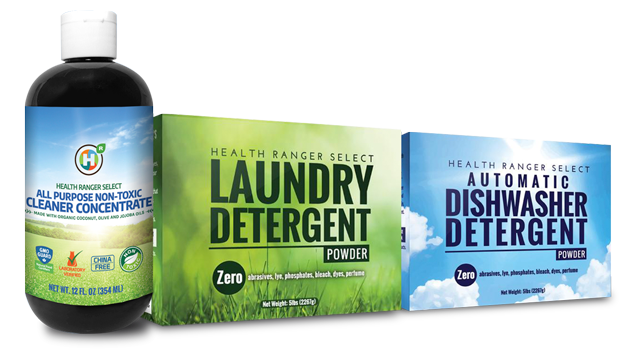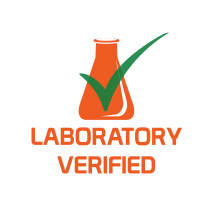Cancer Causing Hormone Disrupting Poisons Are in Our Household Cleaners
by Admin · Published · Updated
Multi-Purpose Cleaner
Concentrate that DOES IT ALL
The Health Ranger Store is proud to announce our first ever lab-verified all-purpose cleaner concentrate. It’s a wholesome and powerful formula you can use to clean almost any surface in your home, from floors to kitchen counters, and even bathrooms or laundry. You can even use it to clean your car.
Unlike many conventional cleaning products, our all-purpose cleaner concentrate does not contain harmful, hidden toxins. It’s made with organic, wholesome ingredients, making it safe for your family, pets and the environment. Make a healthy decision and switch to Health Ranger Select
All-Purpose Non-Toxic Cleaner Concentrate today.


Hidden ingredients in your household cleaners
Did you know the law does not require household cleaning product manufacturers to list all their ingredients? Even products that claim to be green, natural, or non-toxic may contain hidden ingredients that can harm your health, your family, or the environment. Beware of the following eight ingredients:
Phthalates
These chemicals are widely used in scented products, such as soaps, detergents, and air fresheners, but they may also occur in toilet paper. Phthalates are endocrine disruptors that have been linked to reduced sperm counts in men and increased breast cancer risk in women. Skin contact with products that contain phthalates is enough to absorb the chemical into your body.
Perchloroethylene
or “PERC”
This chemical is also known as “dry-cleaning fluid” because of its applications in dry-cleaning, spot removal, and cleaning upholstery. It is a neurotoxin and is linked to cancer. PERC is so toxic that people living close to dry-cleaning facilities often complain of dizziness and loss of coordination because of its effects. It is also regulated in some U.S. states.
Triclosan
Products labeled as “antibacterial,” including hand soaps and liquid dishwashing detergents, usually contain triclosan. This chemical poses many risks – apart from being a possible carcinogen and endocrine disruptor, it also poisons streams and rivers. It is also a major contributor to the development of resistant, hard-to-control microbial pathogens.
Quaternary ammonium compounds, or “QUATS”
These chemicals are added as
Sodium hydroxide
You probably know this chemical as lye. It is used to remove tough grime from ovens and to open drains because of its highly corrosive nature. Its effects are more direct than the others in this list – direct contact with lye can cause severe burns on your skin and eyes. Inhaling its fumes may also result in a long-lasting sore throat.
2-Butoxyethanol
This chemical gives window and multipurpose cleaners their sweet smell. Although pleasant to the senses, inhaling small doses of 2-butoxyethanol can lead to a sore throat, while large doses can result in unconsciousness, pulmonary edema, and even kidney and liver damage. Unfortunately, the law does not require it to be added to the ingredients list.
Ammonia
This chemical is added to polishing agents for bathroom faucets, shower heads, and other fixtures because it doesn’t leave streaks. It can irritate the airways when inhaled, especially among people with asthma or lung issues. Prolonged contact leads to bronchitis. When combined with bleach, another common cleaning agent, ammonia creates a deadly toxic gas.
Chlorine
As a bleaching and antibacterial agent, chlorine is found in many products, including toilet bowl cleaners, mildew removers, and fabric whiteners; it’s even in tap water. Chlorine is a potent irritant that affects the respiratory system and is likely to cause chronic conditions. It may also disrupt the function of the thyroid gland.
to a sore throat, while large doses can result in unconsciousness, pulmonary edema, and even kidney and liver damage. Unfortunately, the law does not require it to be added to the ingredients list.











